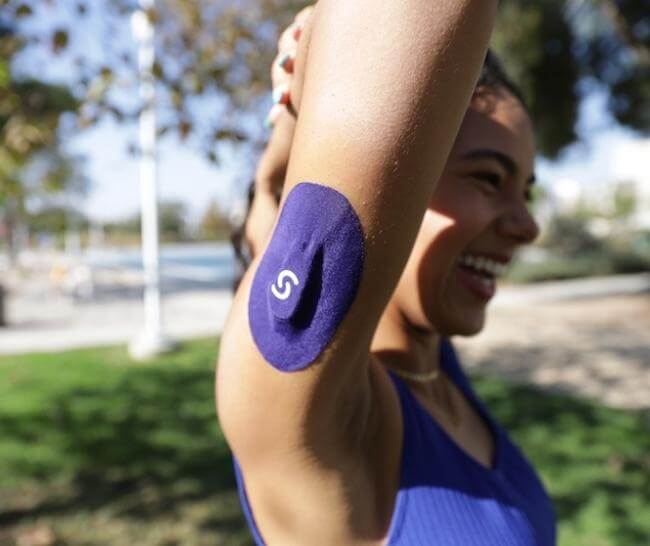Diets high in sugar are linked to several diseases, including type 2 diabetes, but does sugar cause diabetes? While sugar is not a direct cause of this chronic disease, there is a relationship between the two, and diets high in added sugars are linked to a higher risk of type 2 diabetes.1
In this article, we'll dive into the relationship between sugar and type 2 diabetes and learn how several factors contribute to its development, not just sugar intake. We'll discuss the roles of diet, lifestyle, and genetics in diabetes risk and provide practical tips for enjoying your favorite foods while maintaining a healthy balance. Let's clear up the confusion about sugar and diabetes and understand what impacts the development of type 2 diabetes.
{{mid-cta}}
Understanding Type 2 Diabetes
When it comes to diabetes, there is type 1 diabetes, an autoimmune condition in which the pancreas stops producing insulin. Then there’s type 2 diabetes, which occurs when the body becomes resistant to insulin or doesn't produce enough insulin to maintain normal blood sugar levels. You may be diagnosed with prediabetes before type 2 diabetes, as this is the stage where blood sugar levels are higher than normal but not yet high enough to qualify as a type 2 diabetes diagnosis. Gestational diabetes is when diabetes occurs during pregnancy. While it doesn’t always result in diabetes after pregnancy, it does increase the risk of developing type 2 diabetes for women later in life.2
Insulin is a hormone that regulates the amount of glucose or sugar in the bloodstream by transferring sugar from the blood to cells for energy. When cells become resistant to insulin or the body doesn’t produce enough insulin, sugars build up in the bloodstream, which can lead to various health complications.
The more sugar you eat, the more insulin is needed to move sugars from your blood into your cells, but the mechanisms behind insulin resistance are more complex than just eating too much sugar. Someone without diabetes can keep up with the amount of insulin needed after eating a piece of cake or drinking a soda. In contrast, someone with diabetes will experience a much more dramatic rise in blood glucose levels.
While diet does play a role in diabetes risk, here are other factors that can increase your risk of type 2 diabetes, according to the American Heart Association:3
- Family history of diabetes
- Race or ethnic background (Black American, Asian American, Latino and Hispanic American, Native American, and Pacific Islander have a greater chance of developing diabetes)
- Age over 45
- Gestational diabetes history
- Overweight or obese
- Sedentary lifestyle
- Smoking
- High blood pressure
How Does Your Body Metabolize Sugar?

When you eat foods containing carbohydrates, like bread, pasta, fruit, vegetables, beans, or dairy products, your body begins to digest them into glucose, the most simple form of sugar that it can use. As glucose enters your bloodstream, your pancreas releases insulin, which acts like a key, opening the doorway to the cells for glucose to enter and provide energy, be stored as glycogen for short-term storage, or as fat for longer storage.
Complex carbohydrates like fruits, vegetables, and grains include sugars, but also plenty of fiber and other nutrients that help slow down the digestion of sugar so that it has a slower and steadier release into the bloodstream, providing a steady energy source to your body. Simple sugars like soda, candy, and other sweets are digested much more quickly, so more sugar is dumped into the bloodstream at once, and more insulin is needed to move that glucose into the cells.
<p class="pro-tip"><strong>Also Read: </strong><a href=how-much-sugar-should-a-type-2-diabetic-have-a-day>Sugar Limits for Type 2 Diabetics: Daily Recommendations</a>.</p>
Can Sugar Really Cause Type 2 Diabetes?
Because metabolizing sugar is the central issue with diabetes, many people believe that eating too much sugar is a direct cause of type 2 diabetes. While eating sugar does play a role, the development of type 2 diabetes is much more complex than just eating too much sugar.
When you eat more sugar than you need for energy or can be stored as glycogen in the muscles and liver, your body stores that sugar as fat, and excess body fat is a risk factor for type 2 diabetes.4 In this way, diets high in sugar may indirectly lead to inflammation in the body, increasing the risk for chronic health conditions like type 2 diabetes, cardiovascular disease, and more.
There is also some research showing that sugar in the form of high fructose corn syrup may directly impact the liver, increasing the risk of nonalcoholic fatty liver disease and contributing to insulin resistance.5 However, lifestyle factors like low physical activity, smoking, and chronic stress, as well as having family members with type 2 diabetes, also increase the risk.6
7 Ways to Prevent Type 2 Diabetes
While there’s no surefire way to prevent type 2 diabetes, there are plenty of lifestyle and diet choices you can make to help lower your risk.
- Exercising Regularly: A sedentary lifestyle is a major risk factor for type 2 diabetes. Regular physical activity can help reduce body fat and increase lean muscle mass, lower hemoglobin A1C, reduce blood glucose levels after a meal, and lower blood cholesterol, blood pressure, and the risk of heart disease.7 Exercise is also an effective strategy to lower blood sugar after eating too much sugar.
- Eat a Balanced Diet: You don’t need to eliminate all sugars, but making a point to eat an overall balanced diet that’s rich in vegetables, fruits, whole grains, and lean protein can significantly reduce the risk of diabetes.
- Avoid Smoking: Skip or ditch the cigarettes to significantly cut your risk of type 2 diabetes. People who smoke have a 30 to 40 percent higher risk of developing type 2 diabetes than people who don’t smoke.8 And the more cigarettes you smoke, the higher your risk.
- Control Your Portions: Along with a balanced diet, eating appropriate portions of foods, especially carbohydrates, helps reduce the amount of sugar stored as body fat.
- Limit Sugar-Sweetened Beverages: While no one food can cause diabetes, sugar-sweetened beverages are associated with a higher risk. And as Americans, we’re drinking a lot. Up to 47 percent of all added sugars come from what we drink.9 Replacing just one serving of sugar-sweetened beverages daily with unsweetened coffee, water, or tea reduces the risk of type 2 diabetes by 2 to 10 percent.10 Swapping sugar-sweetened beverages with artificial sweeteners didn’t have the same effect.
- Limit Sugary Foods: Refined grains and sugary foods like cereals, fruit juice, cakes, cookies, and pastries have a lot of added sugars and lack nutrients like fiber and protein that help you feel full and slow down digestion. Eating sugary foods often can lead to weight gain by providing more energy than your body can use or store as glycogen.
- Lose Weight: While weight itself is not a very accurate determinant of health, excess body weight and obesity do have a significant relationship to type 2 diabetes risk.11 Making lifestyle choices that help to reduce body fat and BMI, which could lower body weight, may help reduce the risk.
- Get a Good Night’s Sleep: Research has found that people who sleep for short durations have a 40 percent higher risk of getting diabetes than people who get a full 7 to 9 hours a night.12 Even in healthy individuals, just 4 to 5 days of poor sleep can lower your insulin sensitivity by 25 to 30 percent.
Learn More About How to Improve Blood Sugar Health with Signos’ Expert Advice
Signos can play a major role in helping to reduce your risk of type 2 diabetes. Learn healthy eating strategies on Signos’ blog and how Signos can improve health by creating customized diet and exercise recommendations based on your unique health goals. Find out if Signos is a good fit for you by taking a quick quiz.
<p class="pro-tip"><strong>Also Read: </strong><a href=signs-of-type-2-diabetes-in-women>Signs of Type 2 Diabetes in Women: Detection and Management</a>.</p>
- Item 1
- Item 2
- item 3
Topics discussed in this article:
References
- DiNicolantonio, J. J., & O'Keefe, J. H. (2022). Added Sugars Drive Insulin Resistance, Hyperinsulinemia, Hypertension, Type 2 Diabetes and Coronary Heart Disease. Missouri medicine, 119(6), 519–523. https://www.ncbi.nlm.nih.gov/pmc/articles/PMC9762218/
- Centers for Disease Control. About Gestational Diabetes. (n.d.) https://www.cdc.gov/diabetes/about/gestational-diabetes.html?CDC_AAref_Val=https://www.cdc.gov/diabetes/basics/gestational.html
- American Heart Association. Diabetes Risk Factors. (2024). https://www.heart.org/en/health-topics/diabetes/understand-your-risk-for-diabetes
- Klein, S., Gastaldelli, A., Yki-Järvinen, H., & Scherer, P. E. (2022). Why does obesity cause diabetes?. Cell metabolism, 34(1), 11–20.https://pubmed.ncbi.nlm.nih.gov/34986330/
- Mai, B. H., & Yan, L. J. (2019). The negative and detrimental effects of high fructose on the liver, with special reference to metabolic disorders. Diabetes, metabolic syndrome and obesity : targets and therapy, 12, 821–826. https://www.ncbi.nlm.nih.gov/pmc/articles/PMC6549781/
- Kolb, H., & Martin, S. (2017). Environmental/lifestyle factors in the pathogenesis and prevention of type 2 diabetes. BMC medicine, 15(1), 131.https://pubmed.ncbi.nlm.nih.gov/28720102/
- Amanat, S., Ghahri, S., Dianatinasab, A., Fararouei, M., & Dianatinasab, M. (2020). Exercise and Type 2 Diabetes. Advances in experimental medicine and biology, 1228, 91–105. https://pubmed.ncbi.nlm.nih.gov/32342452/
- Food and Drug Administration. How Smoking Can Increase Risk for and Affect Diabetes. (2024). https://www.fda.gov/tobacco-products/health-effects-tobacco-use/how-smoking-can-increase-risk-and-affect-diabetes
- Warshaw, H., & Edelman, S. V. (2021). Practical Strategies to Help Reduce Added Sugars Consumption to Support Glycemic and Weight Management Goals. Clinical diabetes : a publication of the American Diabetes Association, 39(1), 45–56. https://www.ncbi.nlm.nih.gov/pmc/articles/PMC7839604/
- Drouin-Chartier, J. P., Zheng, Y., Li, Y., Malik, V., Pan, A., Bhupathiraju, S. N., Tobias, D. K., Manson, J. E., Willett, W. C., & Hu, F. B. (2019). Changes in Consumption of Sugary Beverages and Artificially Sweetened Beverages and Subsequent Risk of Type 2 Diabetes: Results From Three Large Prospective U.S. Cohorts of Women and Men. Diabetes care, 42(12), 2181–2189. https://pubmed.ncbi.nlm.nih.gov/31582428/
- Yashi K, Daley SF. Obesity and Type 2 Diabetes. (2023). https://www.ncbi.nlm.nih.gov/books/NBK592412/
- National Institute of Diabetes and Digestive and Kidney Diseases. Diabetes Discoveries & Practice Blog. The Impact of Poor Sleep on Type 2 Diabetes. (2021).https://www.niddk.nih.gov/health-information/professionals/diabetes-discoveries-practice/the-impact-of-poor-sleep-on-type-2-diabetes




.jpg)



























